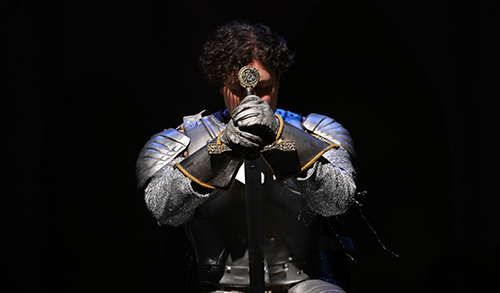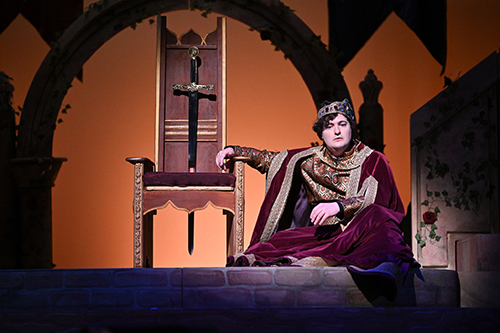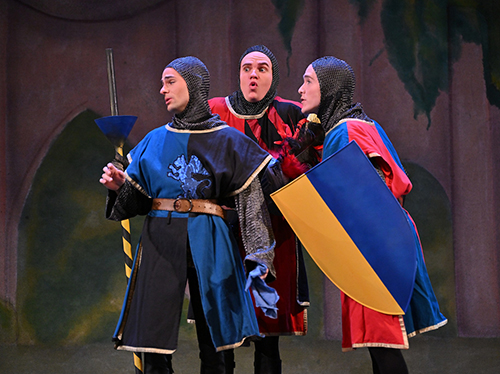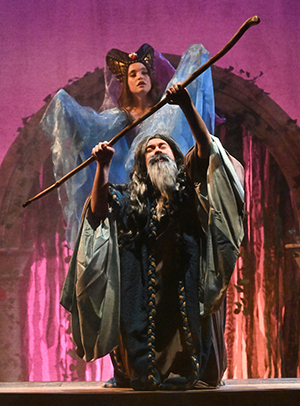by Daniel Hathaway

For happily-ever-aftering than here in Camelot
On June 10, Ohio Light Opera opened its 44th season with the first of thirteen performances of Lerner & Loewe’s Camelot, brilliantly time traveling its audiences in Freedlander Theater at the College of Wooster back to a legendary and evanescent Medieval era when knights in shining armor gathered with King Arthur at a round table (where all are equal) and pledged themselves to a code of purity and chivalry.



Choreographer Spencer Reese has only one real dance episode to manage, but his ebullient staging of “The Lusty Month of May” is a delightful romp around the maypole. In the pit, the OLO Orchestra gave fine support to the cast, and the score was expertly paced by conductor Michael Borowitz.

Although the progress of the narrative gets bogged down a bit in the second act — not OLO’s fault — the visit to Morgan le Fay’s enchanted forest with Mordred (played with excellent diction by Matthew Reynolds) offers a refreshing entremet from Michelle Pedersen, who might have just stepped through a scrim from other duties as the witch in Hansel and Gretel. The sentimental encounter between the disillusioned Arthur and a young archer who is determined to take a seat at the Round Table closes the show on a hopeful note.

Camelot runs in repertory in Freedlander Theater at The College of Wooster through July 30.
Published on ClevelandClassical.com June 20, 2023.
Click here for a printable copy of this article


